eCommerce personalization.
A key to more sales, customer happiness, competitive advantage, and many other benefits.
But how to use this key to unlock the above benefits?
I’ll answer this question along with many others in this post.
So let’s begin with the basics.
Table of Contents
What is eCommerce Personalization?
eCommerce personalization is the practice of building your online store in a way that every visitor finds it super-relevant.
The goal of personalization in eCommerce stores is to offer a delightful experience to visitors. This personalized eCommerce experience can lead to a purchase and persuade users to come back again for shopping.
Maybe that’s why 51% of marketers have personalization as their top priority.
There are several ways to incorporate personalization in eCommerce websites.
You can recommend, upsell or cross-sell relevant products, display location-based content, send personalized emails, retarget with ads, and much more.
Let’s dig deep into personalization for eCommerce to find out its importance, benefits, tactics, and examples.
Importance of eCommerce Personalization
To me, the future is personalization.
– Marissa Mayer, American Businesswoman
eCommerce website personalization is important to make sure that your visitors find your website(and its contents) more relevant and appealing.
According to Forrester, 89% of the brands are investing in personalization.
Another report from Instapage shows that 74% of the customers feel frustrated if the website content isn’t personalized.
It’s self-evident that personalization for eCommerce is a key factor to delight your customers. That is why so many brands are investing in it.
Thus, if you’re brainstorming on ways to improve CX at your store, you can give personalization a shot if you haven’t already.
We’ve uncovered more benefits of personalization later in this post.
Best eCommerce Personalization Tactics to Follow
There are dozens of eCommerce personalization tactics out there. But not every method is made for your business.
So, I’ve compiled a list of those tactics that you can implement in your business pretty easily, even if you’ve just begun your journey.
1. Behavioral Personalization
By behavioral personalization, I refer to the tactics where you analyze the behavior of the users on your website or app to display personalized offers.
For instance, let’s say you run an apparels website and a visitor visits it and browses through the caps. If she doesn’t purchase any cap, you’ll send her email or push notifications with a message like, “Hats off to you. 60% discount on caps”.
The user will find this more connecting and can get back to your website to buy a cap.
Behavioral personalization is a great way to improve customer experience and engagement at your store.
You can use a CRM like HubSpot to implement behavioral personalization in an eCommerce store. With this CRM, you can create campaigns if a user visits a specific page or category and spends a set amount of time there.
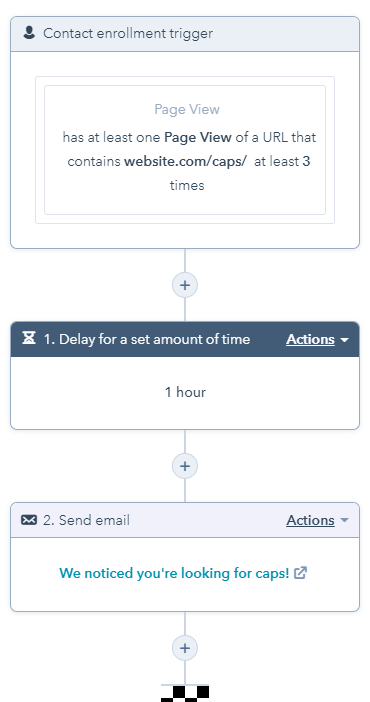
Want to try behavioral personalization at your store?
Do it easily with HubSpot. Try HubSpot CRM and you won’t regret it.
2. Geographic Personalization
Geographic personalization involves content creation based on the location of the users.
Here’s an example,

Credit: Optinmonster
Location-based personalized offers are more connecting and are more likely to engage users.
For example, if we say your brand operates globally and you want to run a campaign for the 4th of July, i.e. US Independence day, you can create a dynamic landing page and show it to US-based users only.
If you can’t create a landing page, you can create campaigns, popups, or individual emails and deliver them to US customers.
Geographic personalization is an amazing tactic to delight your website visitors.
3. Checkout Personalization
Checkout personalization is when you try to make a personalized offer right before or after the checkout.
You can simply call them to upsell or cross-sell.
Here’s an apt example of it:
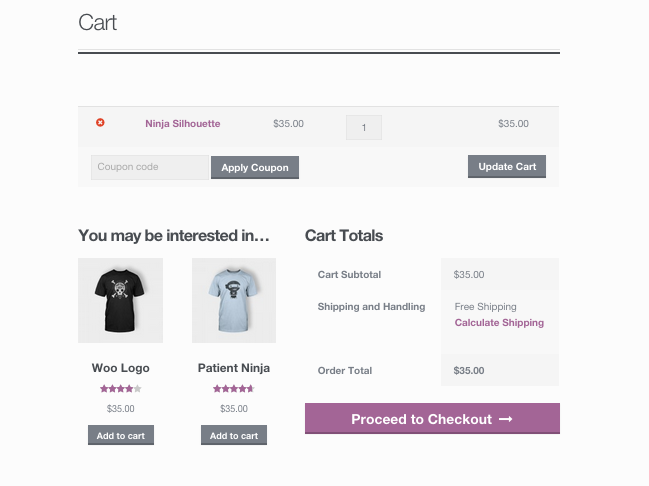
Credit: Hollerwp
If you want to double-down on checkout personalization, you can show offers after checkout as well.
This eCommerce personalization tactic has a great potential to increase the average order value of your eCommerce store.
4. Email Personalization
Email personalization is the most common personalization tactic almost every business uses.
Why so?
Because personalized emails increase the open rate by 26%.
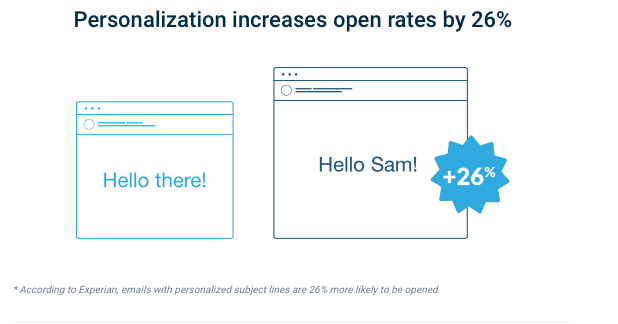
Credit: CampaignMonitor
You can allow users to personalize their opt-in preferences. Along with that, you can personalize your mails with necessary user details like their name, location, orders, or anything that doesn’t look creepy.
You can also use personalized emails for abandoned cart recovery. In simple words, sending emails with the cart URL where the user added a product but didn’t purchase.
This makes sure that you don’t lose any money on the table and even if you do, you recover them.
A tool like HubSpot CRM can be a great help for your email personalization strategy. You can create emails with a drag and drop editor, make them dynamic using HubSpot properties and track their performance through the reporting features.
Upscale your email marketing with HubSpot
Get a free consultation with our HubSpot experts to understand how to begin with HubSpot.
5. Suggestive Personalization
Suggestive personalization is what I call a tactic to suggest products to influence the buying decision of the users.
This eCommerce personalization tactic can involve suggesting recently viewed products, products similar to previous purchases, or a curated list of best-selling products.
Suggestive personalization tactics can help push your sales and revenue since it directly impacts the customer’s buying decision.
How to Personalize Your eCommerce Store?
Let’s see how you can use personalization in your eCommerce store to improve your customers’ experience:
1. Greet New Users with Welcome Email
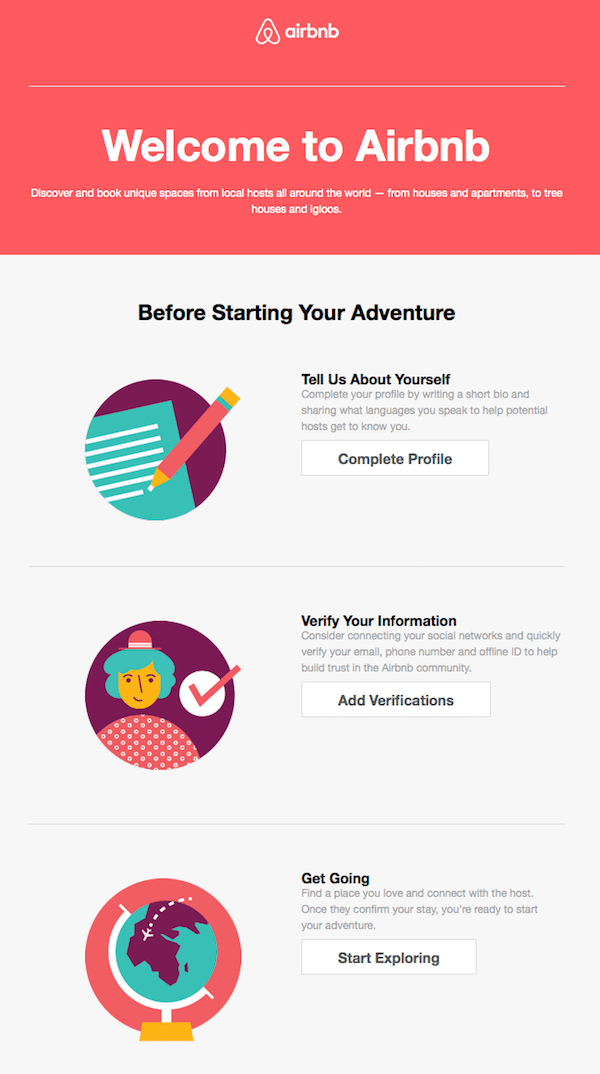
Credit: Instapage
Whenever a new user signs up to your eCommerce store, sending a warm welcome email can be a great way to start their journey with a personalized touch.
And if you club these personalized welcome emails with offers, you can boost revenue by 30%.
2. Employ Social Proofs or UGC
Social proofs or UGC(User-generated Content) is one of the best ways of personalization for eCommerce stores.
People believe more when they listen directly from the end users. Hence, you can add reviews, and ratings, to your eCommerce store to personalize it.
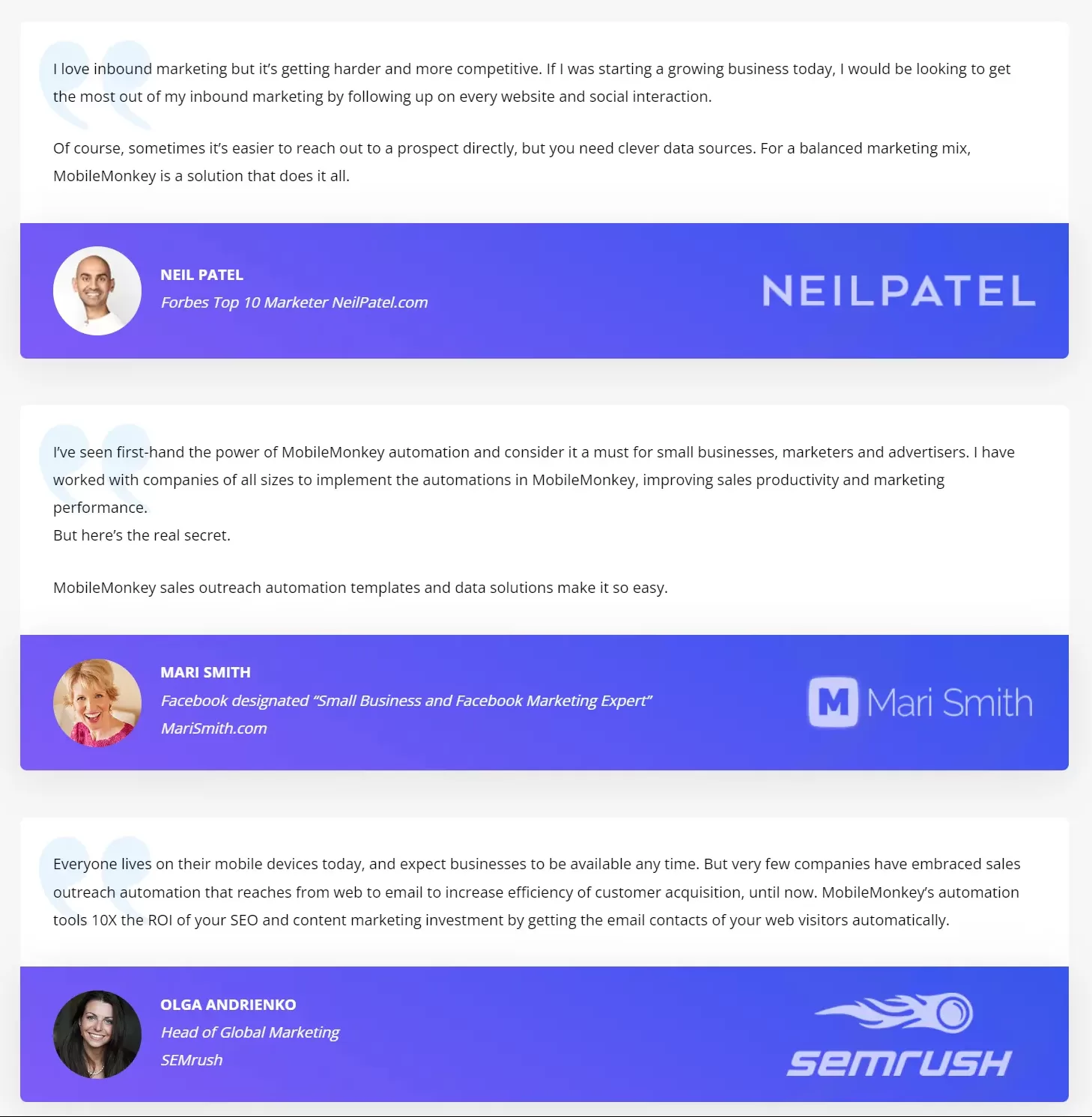
Credit: Mobilemonkey
The above snapshot shows how Mobilemonkey uses UGC to win the trust of its visitors.
3. Ask and Implement Feedback
Feedbacks help you understand where you lack or what you need to improve. So try to use forms, surveys, etc. to collect feedback in order to deliver what customers want.
4. Personalize Product Recommendations
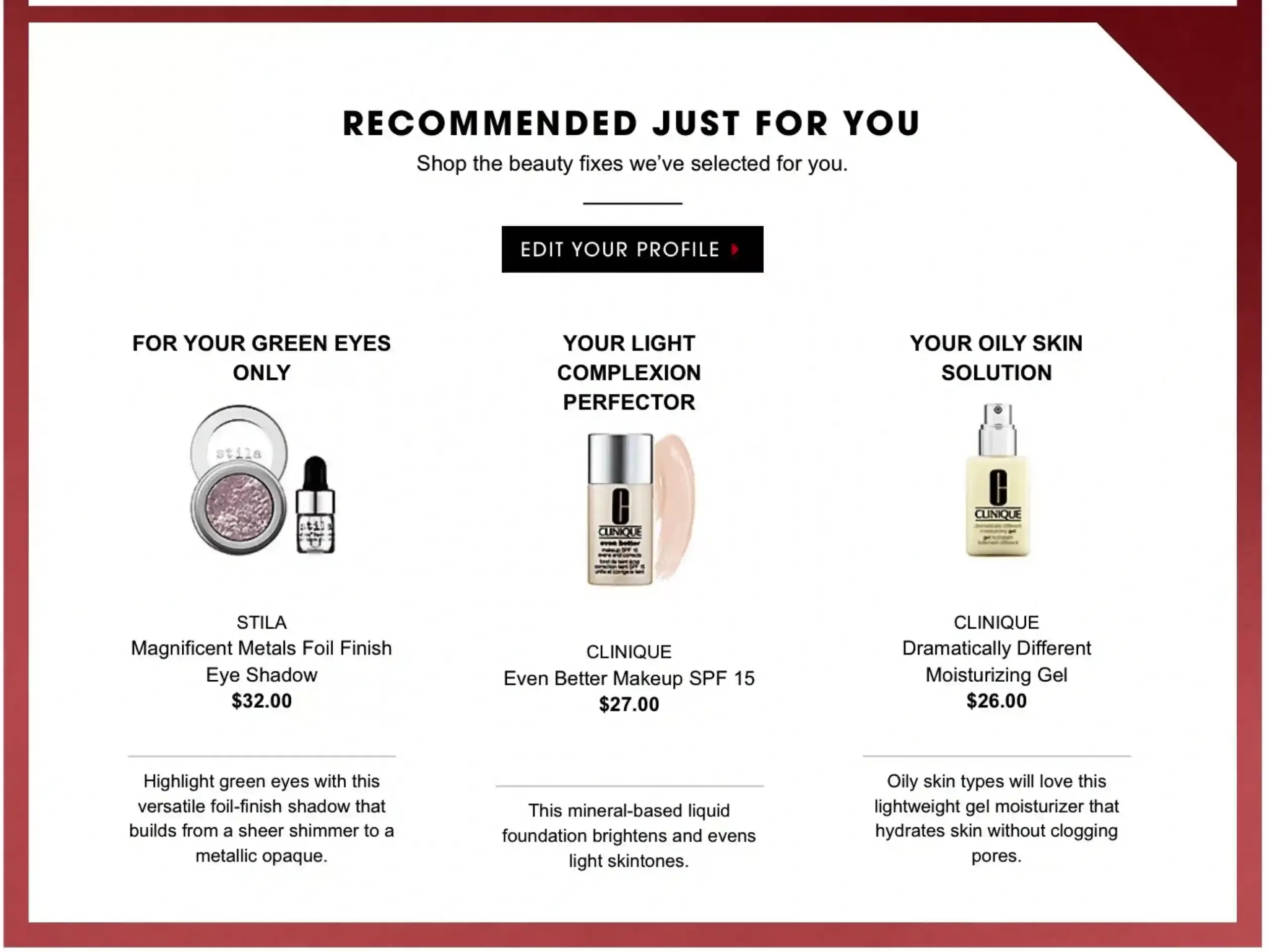
Credit: Remarkety
Personalized product recommendations can be very helpful if you want to sell more.
So make personalized product recommendations based on past purchases, browsing history, etc. to sell more.
5. Personalized Content Suggestions
If you’re a content-driven eCommerce store, it’s better to personalize your content recommendations.
You can let people choose to subscribe to a specific category of blog posts. You can also create and offer gated or downloadable content that’s relevant to the content a user is currently reading.
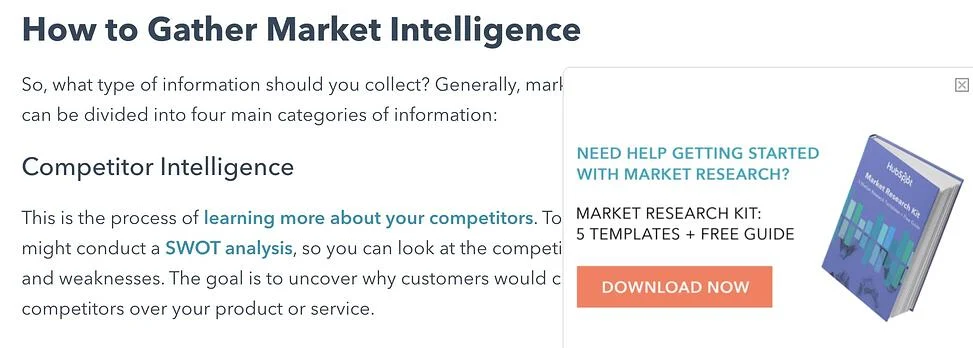
Credit: HubSpot
6. Use Personalized CTAs
Personalized CTAs convert 42% more visitors into leads, as compared to non-personalized ones.
So avoid using those lame messages in your CTAs like Check out now, Try Now, or Get Started. Instead, use some connecting messages.
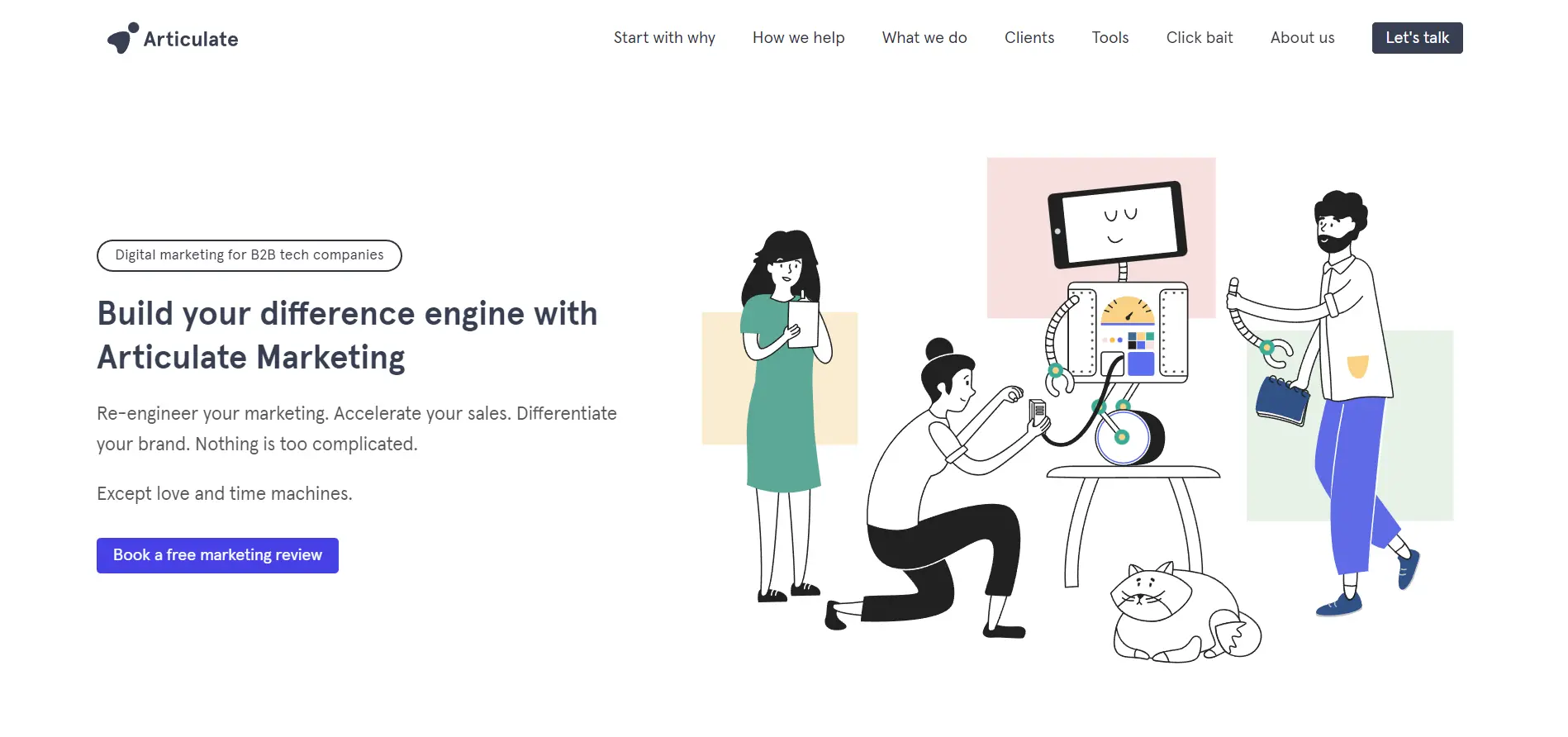
Credit: Articulate Marketing
The above snap from Articulate Marketing is a good example of a personalized CTA.
7. Let Users Have a Wishlist
A wishlist is something I have always loved using. In fact, I find websites incomplete that do not have a wishlist feature.
So if you don’t have a wishlist feature on your eCommerce website, add it now.
8. Add Chat Support
eCommerce transactions through chatbots are projected to amount to $112 billion by 2023.
Even Amazon has added Alexa as a shopping assistant on their app.
And if you want to stay ahead with your competitors in personalization, you can add a chatbot or live chat feature to help users with shopping.
9. Design a Personalized Landing Page
Personalized landing pages can work best for converting visitors into leads.
You can personalize your landing pages as per the geographic location, user behavior, or even the competitors in your niche.
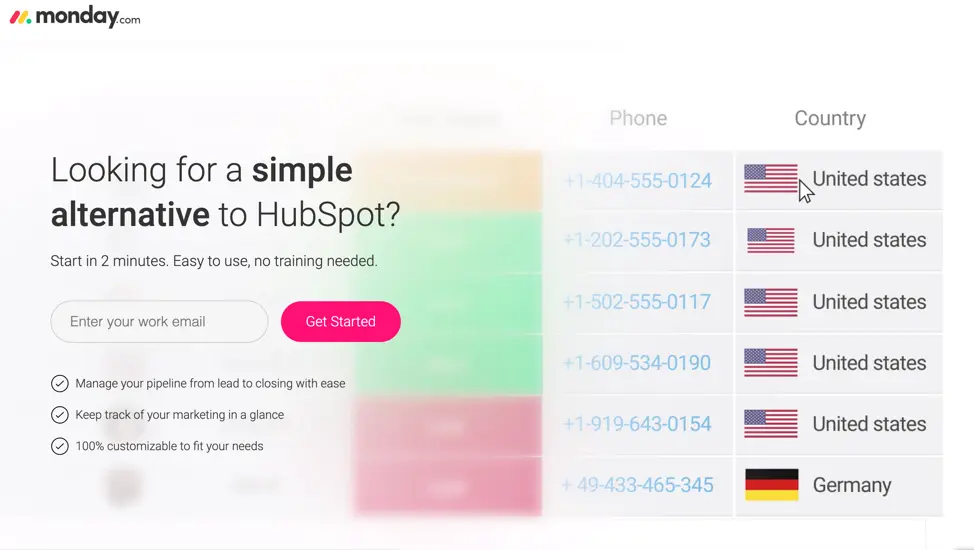
Credit: Mention
I found this eCommerce personalization example quite interesting & daring as well where monday.com mentions its competitor HubSpot on its landing page.
10. Autofill Checkout Form
Checkout forms on eCommerce stores aren’t long enough but users still feel exhausted filling them.
It’s recommended to automatically fill the checkout form on your website so the users don’t need to put the details manually. This may not sound like a big change but it eases the checkout process and that’s what every customer looks for.
6 Amazing eCommerce Personalization Examples
There are hundreds of brands out there personalizing their website. I’ve curated some of the best eCommerce personalization examples that impressed me the most.
1. Amazon
Whenever there’d be a debate on eCommerce website personalization, Amazon would always be in the examples.
Amazon uses personalization to an extent.
For example, It cross-sells relevant products in the Frequently bought together section and integrates Alexa as a shopping assistant.
 |
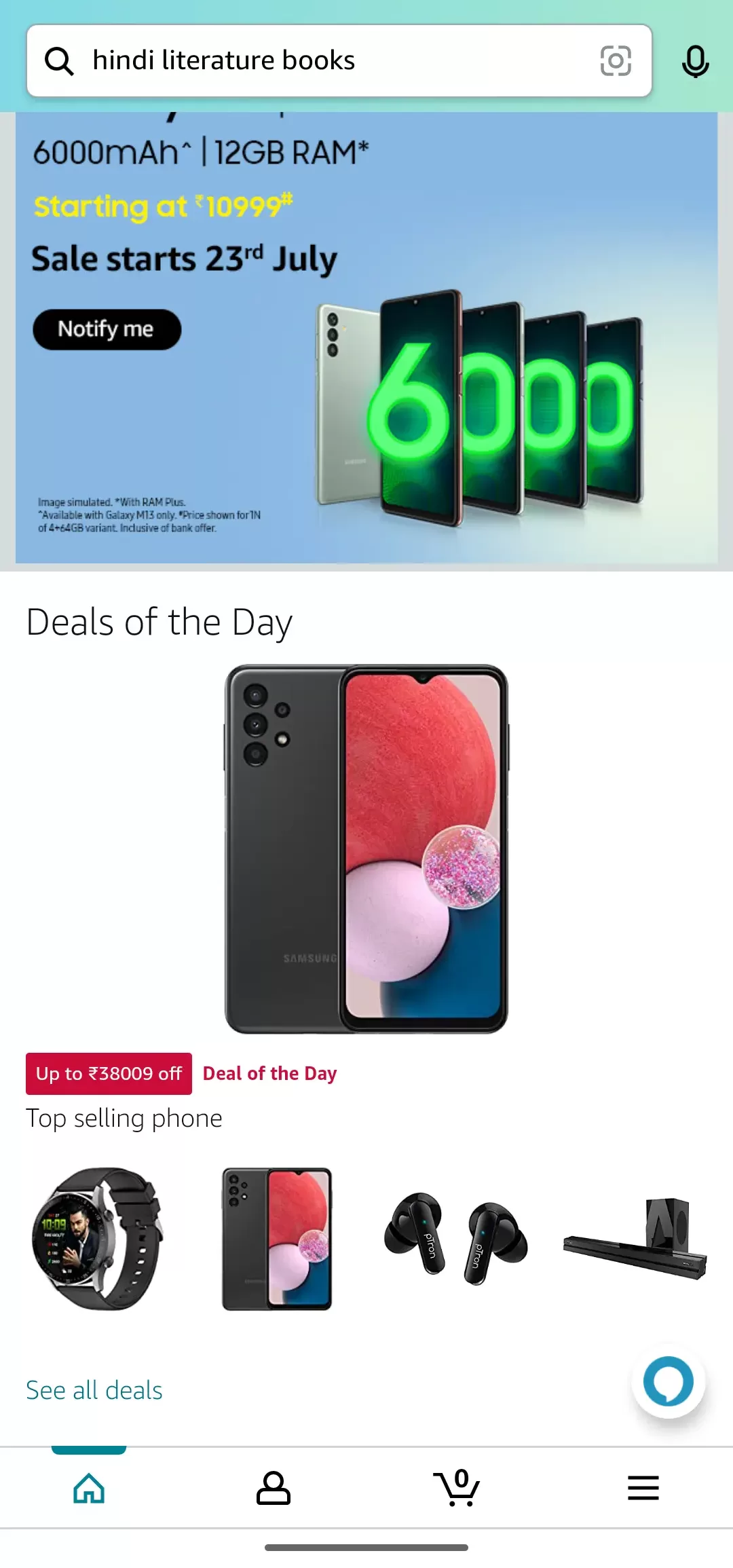 |
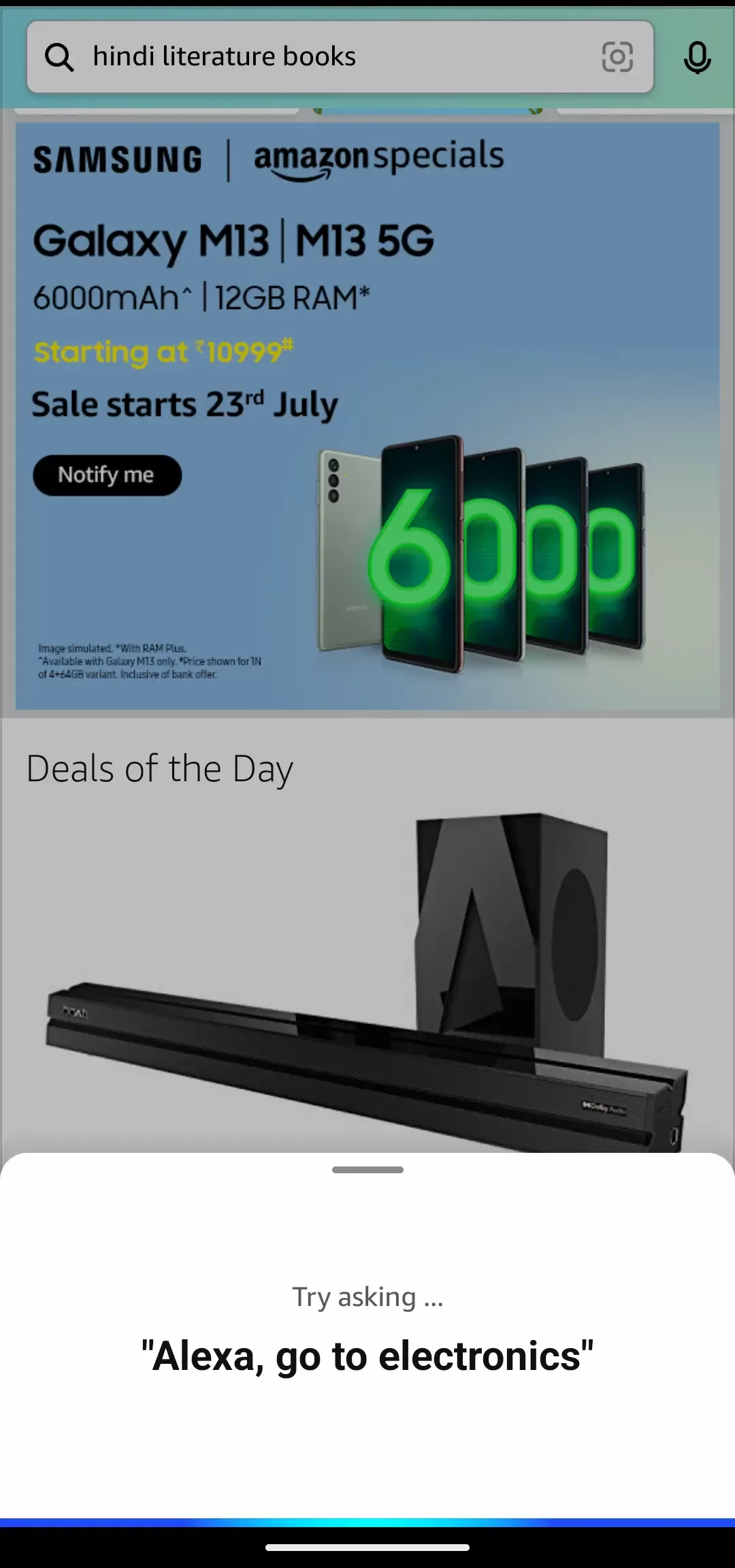 |
All of these eCommerce personalization tactics make the shopping process easy for customers. And the easier you make shopping, the higher your chances of selling.
2. HubSpot
This is something many people won’t talk about.
But I also like how HubSpot lets visitors personalize their newsletter emails.
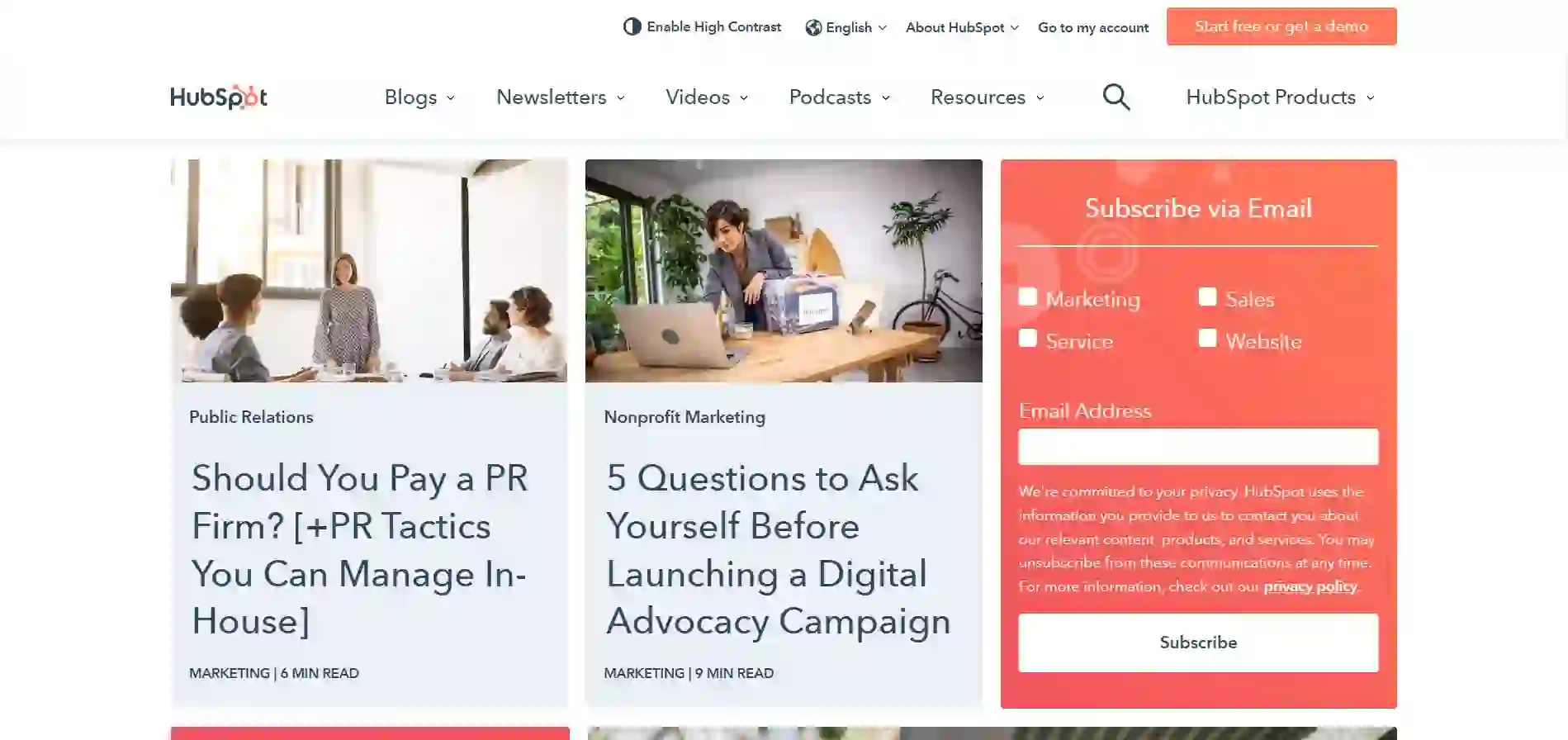
They let users choose what kind of blogs they want to receive in their emails.
This isn’t exactly an eCommerce personalization example but it is something you can use at your online store.
HubSpot writes for different categories like Sales, Marketing, and more. And it’s highly possible that every potential subscriber wouldn’t be interested in reading all types of blogs.
Hence, they can select the category they’re interested in to receive the content they actually want to read. This way, the subscribers won’t be bombarded with all types of emails. Instead, they’ll only receive the relevant content.
3. Flipkart
The Indian eCommerce giant Flipkart could be a perfect eCommerce personalization example..
They’ll recommend products based on your recent browsing history. Along with that, they offer you relevant products right after you click on the Buy Now button on any product.
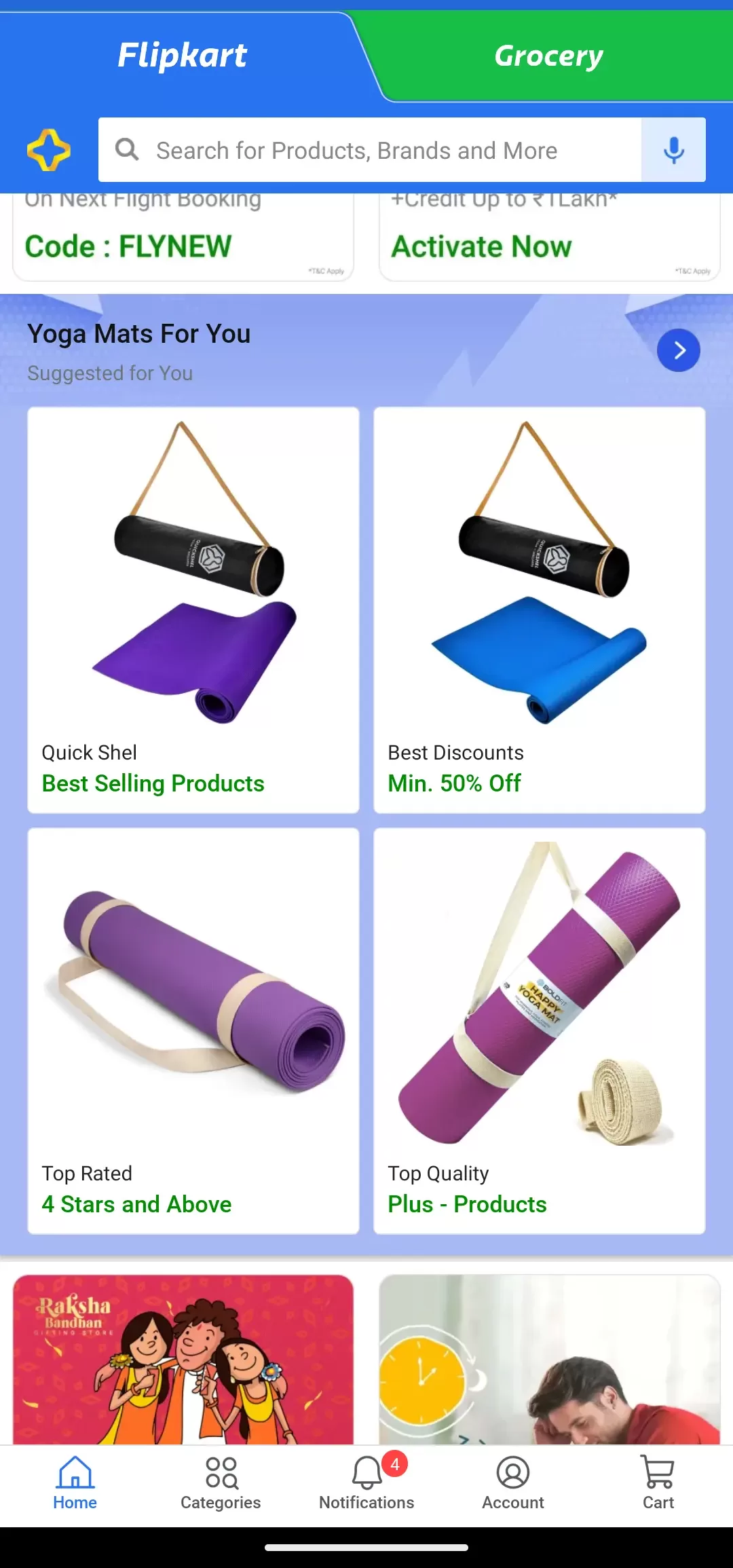 |
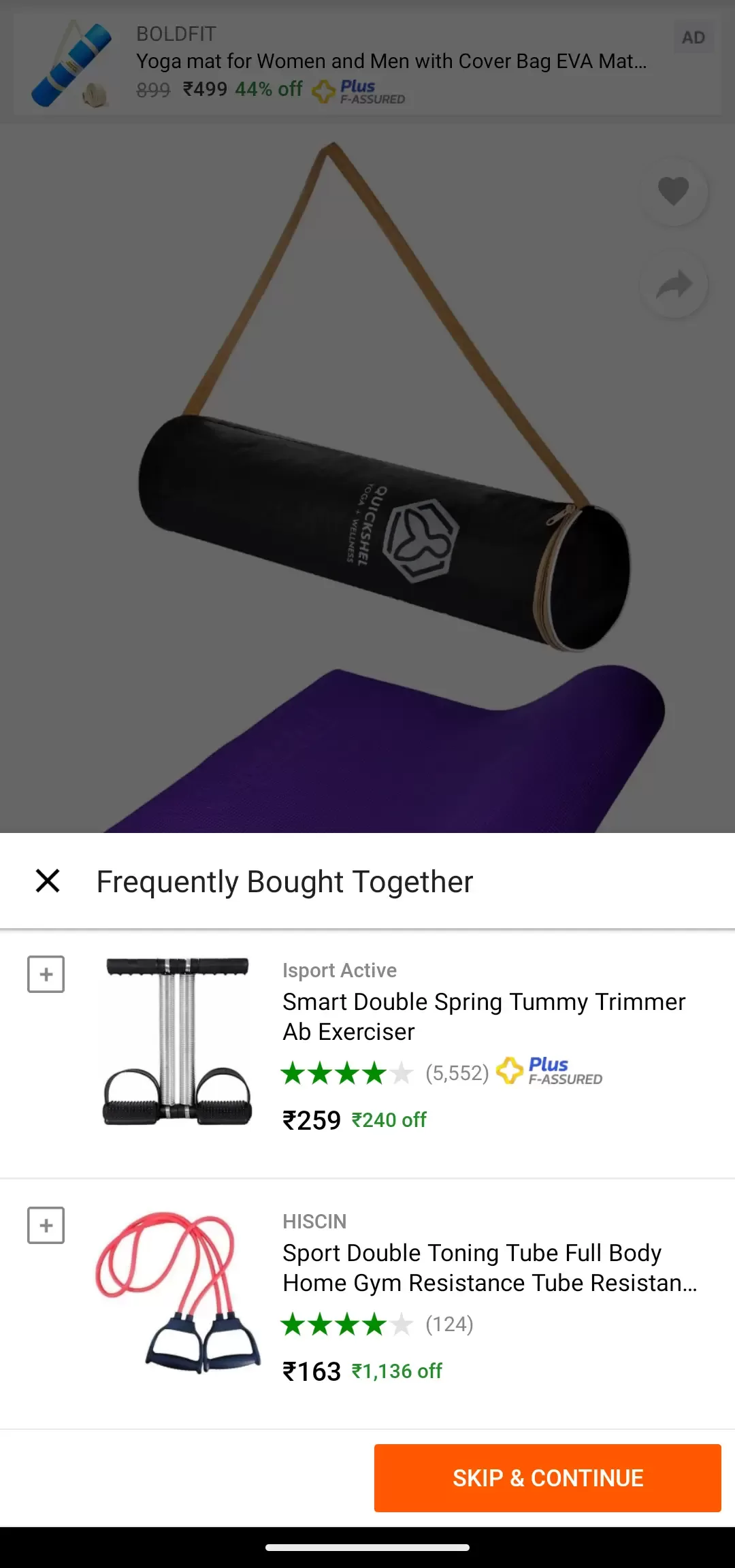 |
This helps buyers pick the right products pretty quickly and automatically instead of searching for them manually.
This is one of the most common and best methods of eCommerce personalization.
It helps brands eliminate the efforts users put to search for relevant products. As a result, effortless shopping for the buyer.
4. Zoho
Zoho is another example I’d like to mention here.
If you go to their CRM pricing page, they’d display the pricing of their CRM in your currency based on your location.
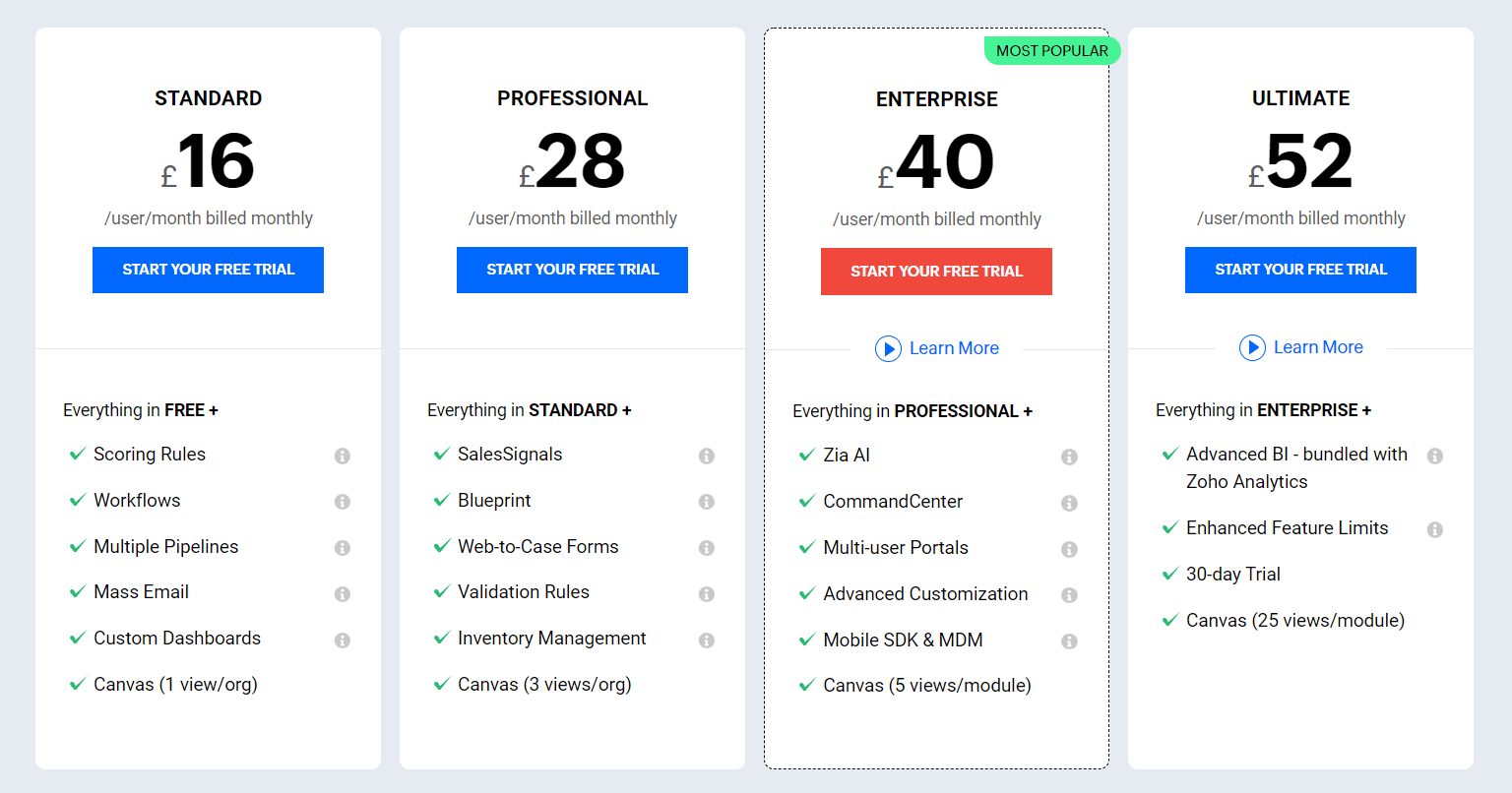
This feels more personalized as it is easy to perceive the exact amount you’ll have to pay to buy their CRM.
You don’t need to open a calculator on your computer and calculate the exchange rates from US dollars into your currency.
5. CopyHackers
This one’s my favorite.
CopyHackers offer a search bar where you can search the articles as per your profile or the intention of reading.
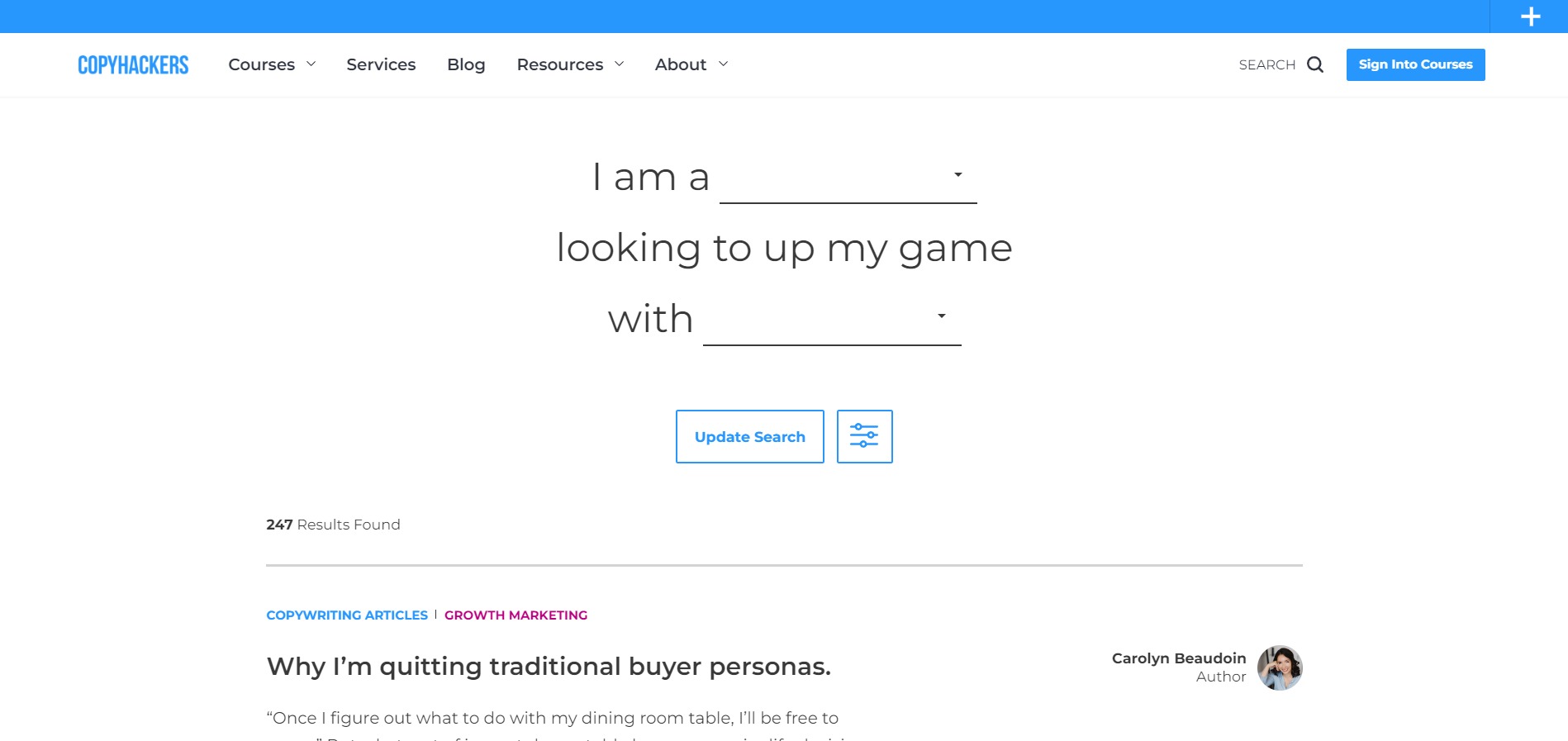 |
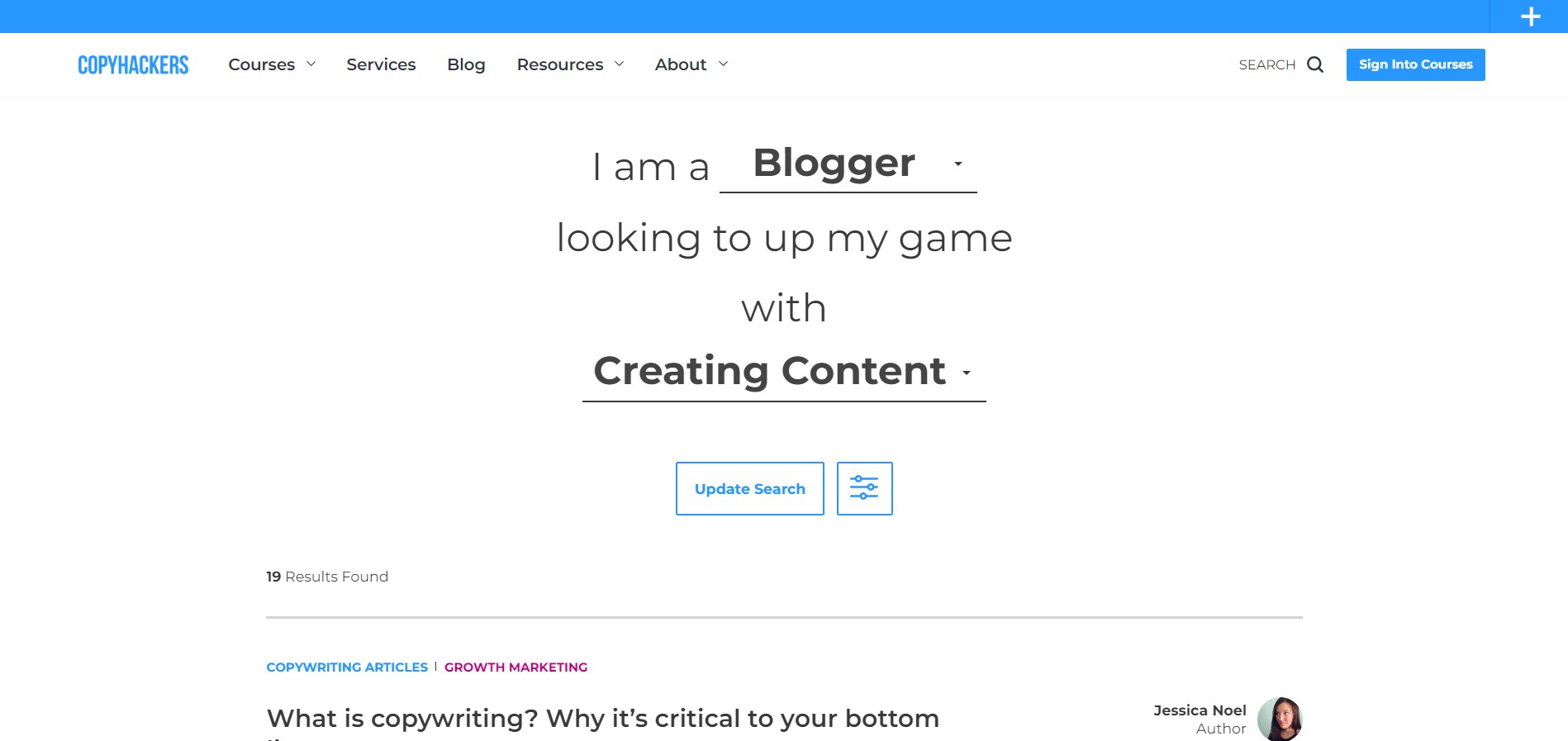 |
This kind of personalization makes the search results hyper-relevant as you’re yourself deciding what type of content you want to read.
6. Myntra
The eCommerce personalization example that impressed me the most is from Myntra.
Another Indian eCommerce brand that embraces personalization to an extent.
They have a dedicated column called Myntra Suggests where they make personalized clothing suggestions that are most suitable for you.
Along with that, if you shop with them, they ask you for the size so they can recommend the perfect size for you the next time.
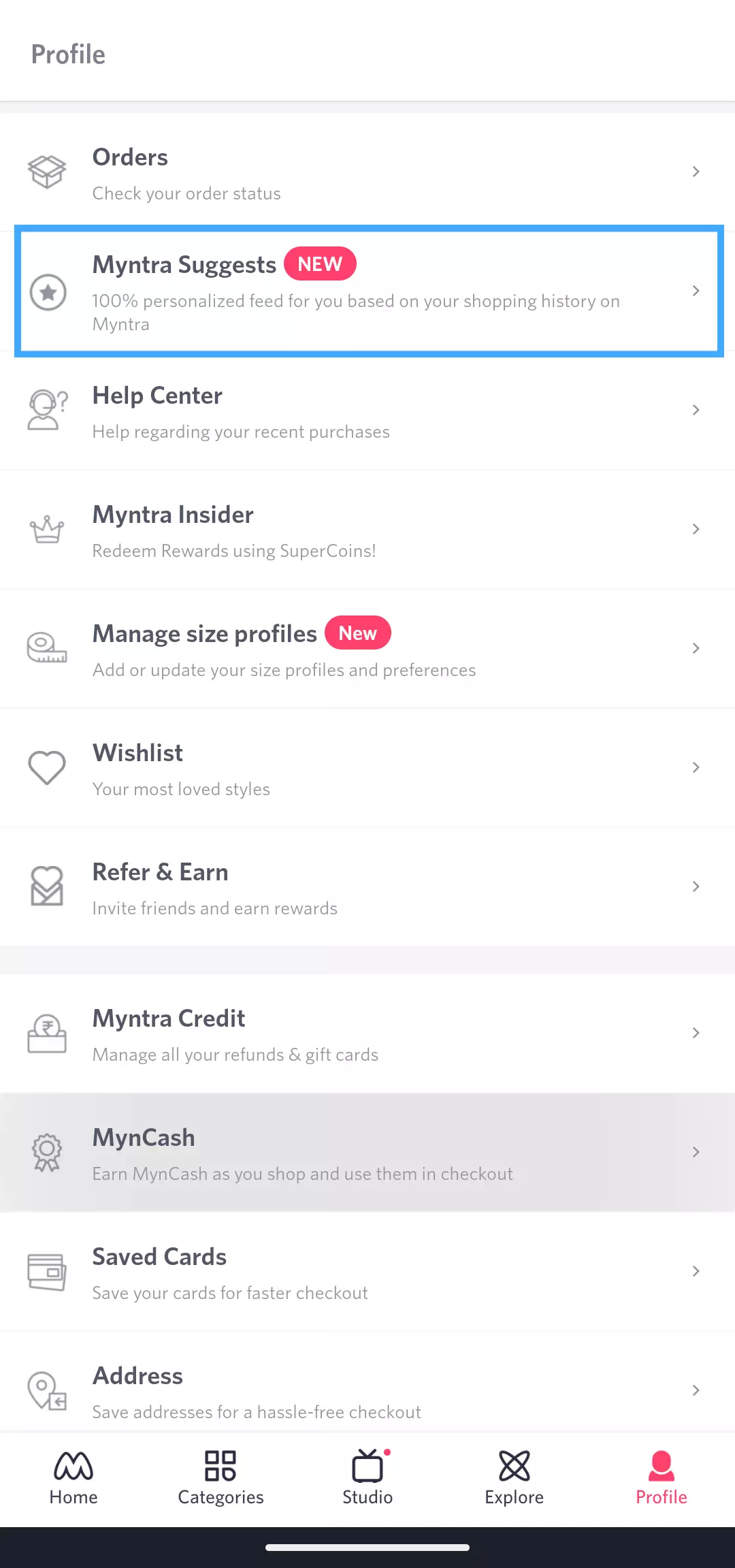 |
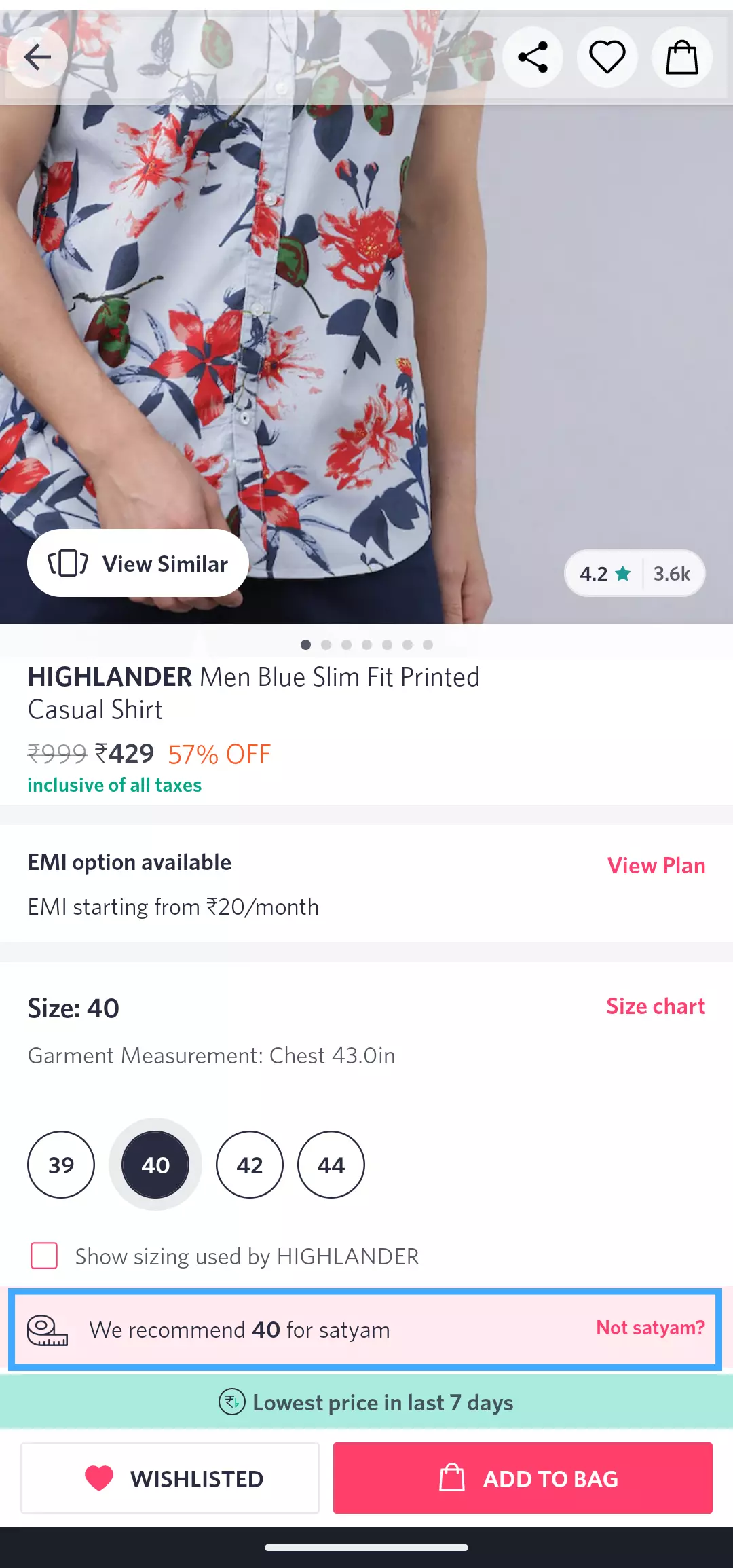 |
This adds a personal touch to the shopping experience since you feel that the brand knows you pretty well. And the customers always prefer brands that know them on a personal level.
Why Should You Personalize Your eCommerce Store?
A debate on the reasons for eCommerce website personalization could go on for hours. Because there are so many benefits of it.
Let’s see a few of them to understand why you should personalize your online store.
1. Make Conversions Easier Than Ever
Conversion is the priority metric for every business out there. And eCommerce stores aren’t untouched by it.
Personalizing your eCommerce store has a great potential of pushing your conversions.
HubSpot, after analyzing over 330,000 CTAs, found that personalized CTAs convert 202% better than basic ones.
But that’s only about CTAs.
There’s more you can do to lift the conversion rates at your eCommerce store. For example, you can personalize product recommendations based on previous purchases.
A user will more likely grab an offer that’s connected to her previous purchase rather than a complete random offer.
2. Captivate Users’ Interest
People have a shorter attention span these days. Hence, engaging users isn’t easy for brands.
But with personalization, you can improve the engagement at your online store.
Tech giants like YouTube, Netflix, Instagram, and Google Chrome are leading this game. They recommend the content based on your interactions on their website so you don’t leave their space and stay engaged.
3. Make Your Customers Your BFF
A loyal customer base is every business’s dream.
And personalization plays a key role in making your customers loyal to your brand.
70% of the customers’ loyalty is influenced by the brand’s understanding of their personal needs.
So if you’re taking care of the interests of your customers, they’ll stick to your brand for long. And it’s a ubiquitous fact that the probability of selling to these loyal customers is up to 70% as compared to the new customers with 5-20% only.
We can say that personalizing your eCommerce store would help you sell more eventually.
4. Offer Customer Experience They Love
I never go to the stores I had a bad experience with.
Maybe I am in those 65% of customers who switch to a different brand after a poor experience.
Personalization in eCommerce stores can put a halt to this.
Offering products based on their interests or sending out content they engaged with can help you improve your customers’ experience at your store.
And if they had a good time on your domain, they’ll prefer you over others.
5. Get a Better Hold of Your Customers
Customers are more mysterious than space.
Businesses are every day trying to understand their customers. And personalization comes to help here as well.
In order to personalize your eCommerce store, you start collecting data like your visitor’s email, name, date of birth, website interaction, page visits, previous purchase, and more.
Analyzing these data points help you understand the behavior of your customers, their likes and dislikes, interests, needs and, more.
66% of customers expect brands to understand their needs.
And if you know their needs, you can deliver hyper-relevant personalized eCommerce experiences.
6. Get a Competitive Upper Hand
Personalization is a powerful weapon to kill your competition.
If the other players in your market aren’t providing a personalized customer experience, you’ll have an edge over them.
From a personalized email to a landing page, any personalization tactic would help you steal your competitors’ traffic.
7. Soar Your Profits
Personalization is indirectly related to your profits.
Personalizing your eCommerce store delights customers. And when customers are happy, they’re more likely to buy,
In fact, 70% of happy customers will shop with your company again.
Personalized product recommendations seem to be more persuasive and have better chances of conversion. Personalization for eCommerce lets you sell your high-value products more easily that are hard to sell otherwise.
8. Increase Repeat Purchases
As I said in the previous point, happy customers will buy from you again.
That means eCommerce website personalization can start a cycle of repeat purchases at your store.
I call this process, the Repeat Buying Loop.
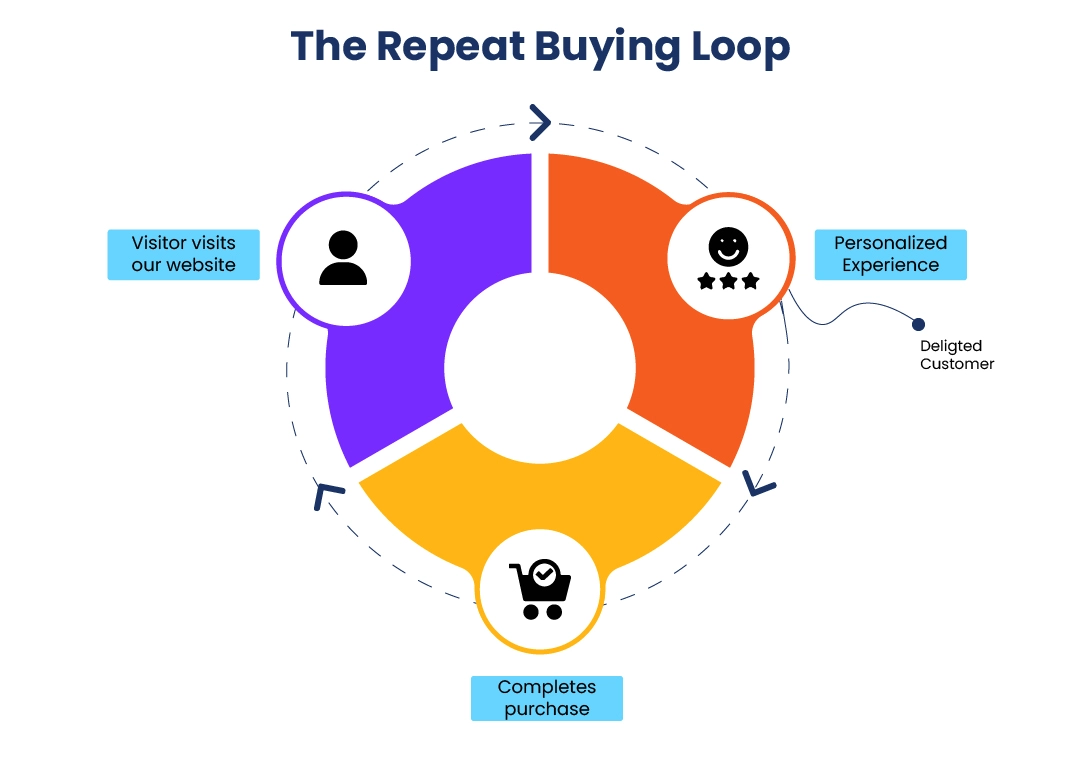
Simply put, the visitor will visit your website, have a delightful personalized eCommerce experience which’ll make her visit again, and the process will go on.
Final Thoughts…
That was all from my end on eCommerce personalization.
To conclude this post, I’d say, if you don’t personalize your eCommerce store, you would miss out on:
- Converting more users
- Engaging visitors on your website
- Turning customers into loyal fans
- Offering a delightful customer experience
- Outperforming your competition
- Increasing your profits
- Getting more repeat purchases, and even more.
So if you also want to impress your visitors and eventually convert them into brand advocates, I’d suggest you employ personalization in your eCommerce store.
Want to grab all these benefits at your online store?
You can get them all using HubSpot CRM. Talk to our HubSpot experts and they’ll guide you on every how, what and why of the platform.

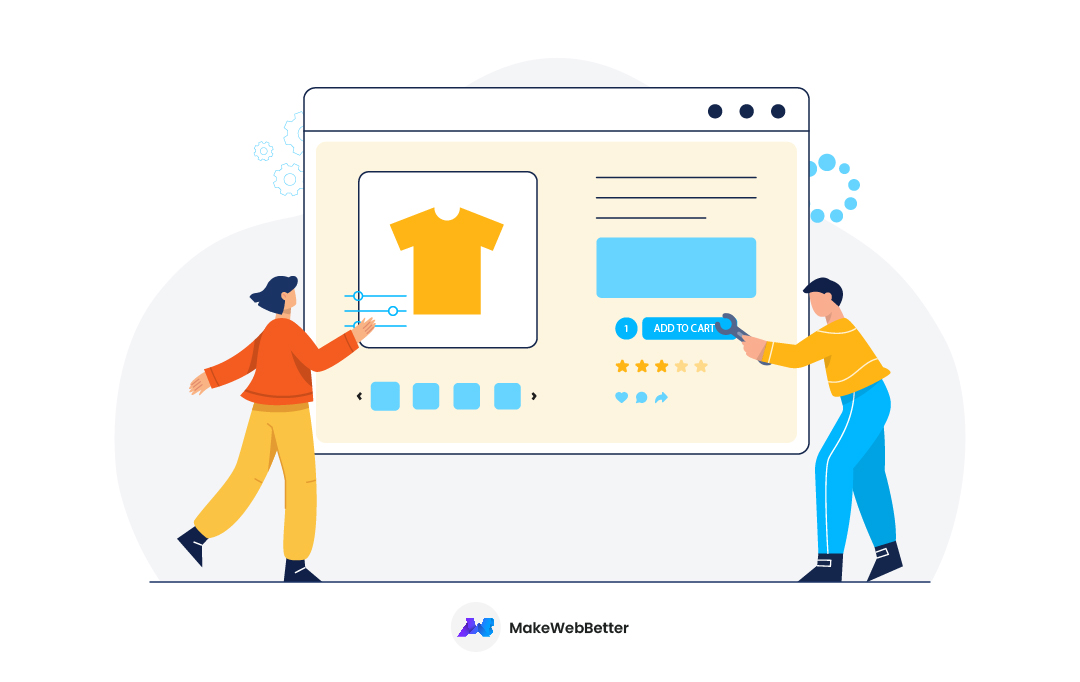







Thanks for sharing nice content!!!
Your welcome 🙂 I hope you found the article helpful.